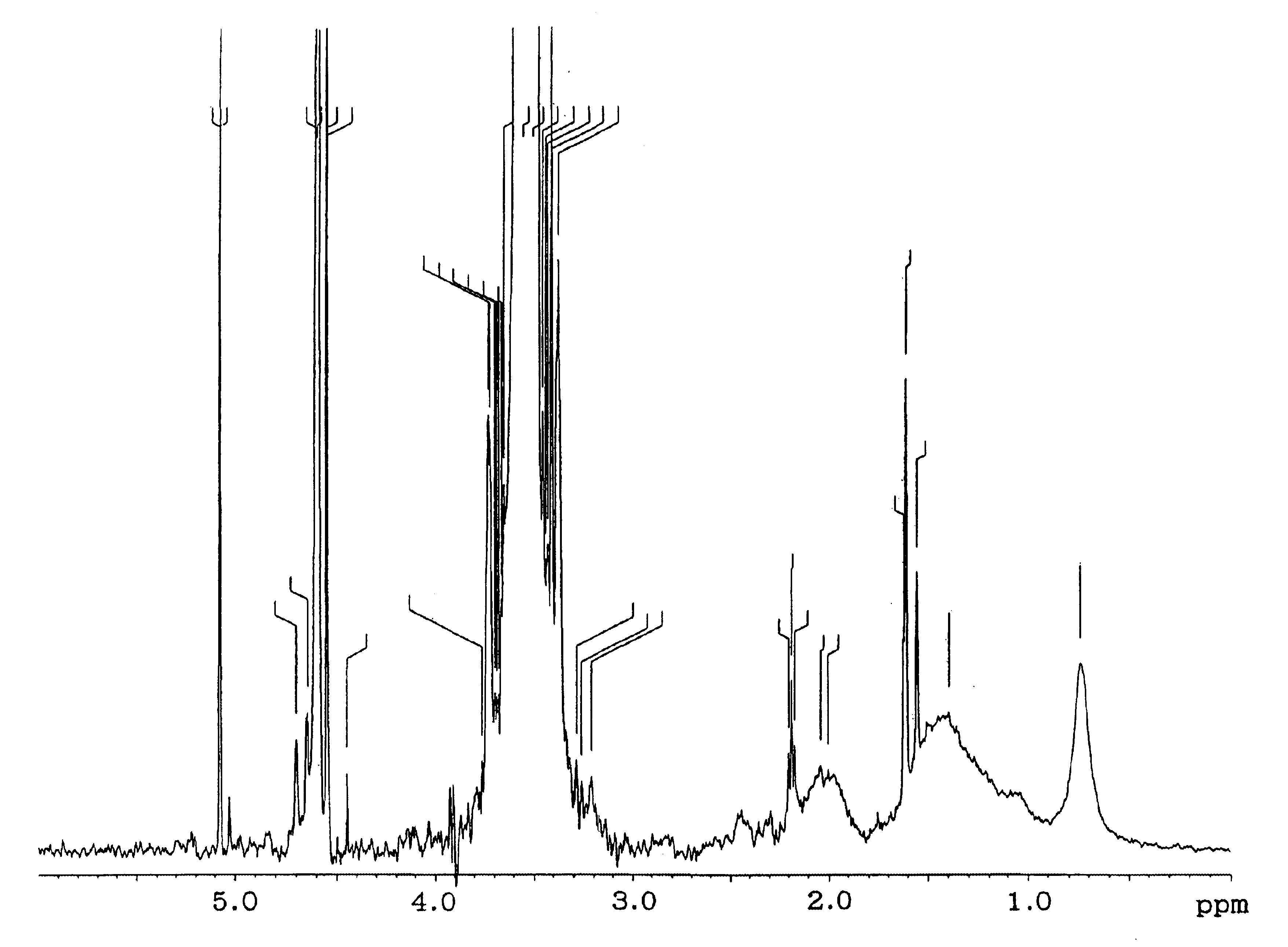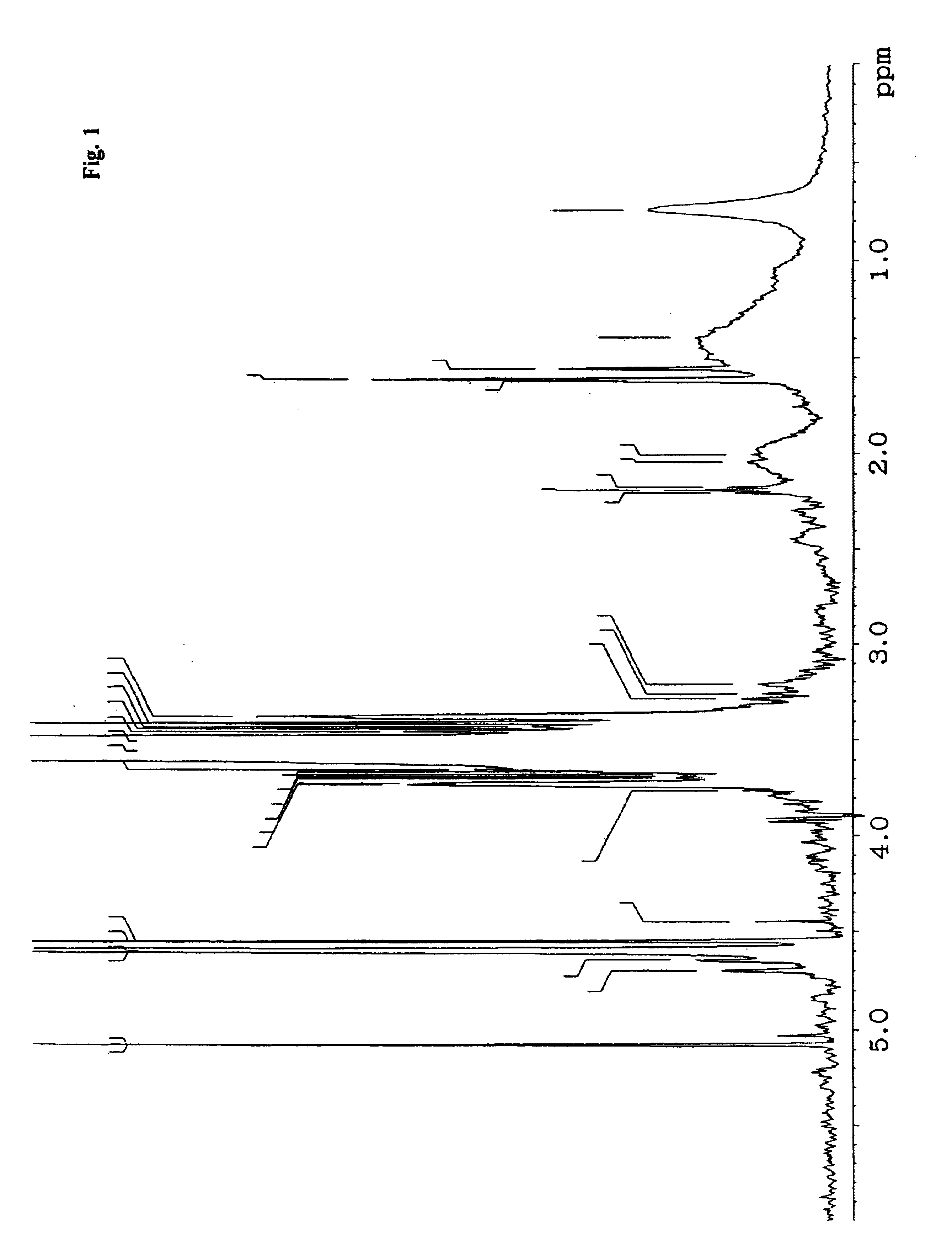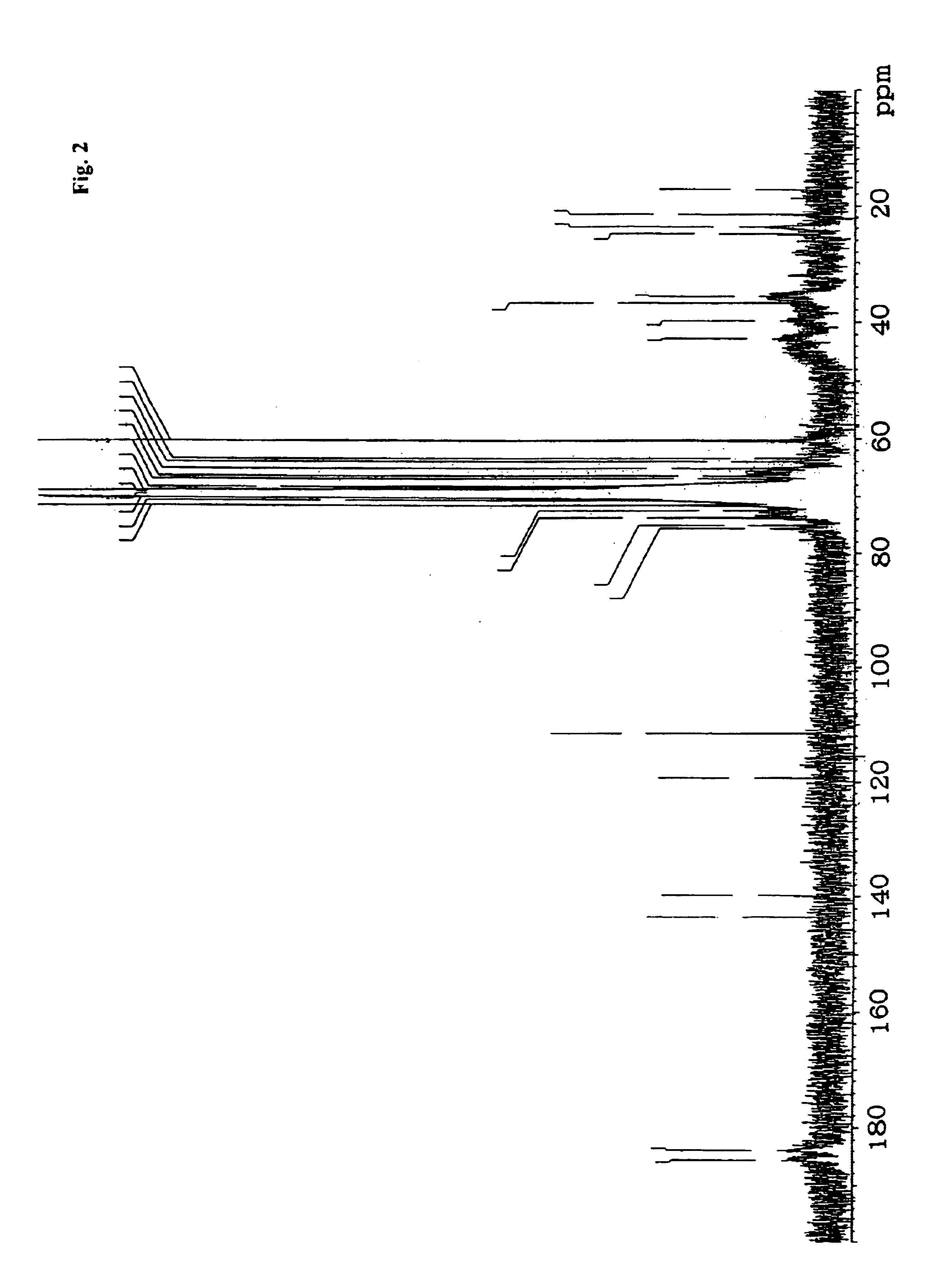Copolymer for cement admixtures and its production process and use
a technology of copolymer and cement, which is applied in the field of copolymer, can solve the problems of insufficient capacity of cement dispersants, and achieve the effects of excellent dispersibility, excellent fluidity, and high dispersibility
- Summary
- Abstract
- Description
- Claims
- Application Information
AI Technical Summary
Benefits of technology
Problems solved by technology
Method used
Image
Examples
example 1-2
for Producing Copolymer (2) for Cement Admixtures
A glass reactor with a thermometer, a stirrer, a dropping funnel, and a reflux condenser was charged with 72.26 parts of ion-exchanged water and 127.74 parts of unsaturated alcohol (product by an addition reaction of 50 mols of ethylene oxide to 3-methyl-3-buten-1-ol), and then they were heated to 65.degree. C. Thereto, 0.57 parts of aqueous hydrogen peroxide solution of 30% was added, and then 34.94 parts of aqueous acrylic acid solution of 40%, 0.53 parts of 3-mercaptopropionic acid, and 10.52 parts of aqueous L-ascorbic acid solution of 2.1% were dropwise added over periods of 3 hours, 3 hours, 3.5 hours respectively. Thereafter, the temperature was subsequently kept at 65.degree. C. for 60 minutes to complete a polymerization reaction, and then the resultant reaction mixture was cooled to not higher than 50.degree. C. and then neutralized with 77.40 parts of aqueous sodium hydroxide solution of 9.0% to adjust from pH 4 to pH 7, th...
example 1-3
for Producing Copolymer (3) for Cement Admixtures
A glass reactor with a thermometer, a stirrer, a dropping funnel, and a reflux condenser was charged with 72.26 parts of ion-exchanged water and 127.74 parts of unsaturated alcohol (product by an addition reaction of 50 mols of ethylene oxide to 3-methyl-3-buten-1-ol), and then they were heated to 65.degree. C. Thereto, 0.71 parts of aqueous hydrogen peroxide solution of 30% was added, and then 46.58 parts of aqueous acrylic acid solution of 40%, 0.67 parts of 3-mercaptopropionic acid, and 12.97 parts of aqueous L-ascorbic acid solution of 2.1% were dropwise added over periods of 3 hours, 3 hours, 3.5 hours respectively. Thereafter, the temperature was subsequently kept at 65.degree. C. for 60 minutes to complete a polymerization reaction, and then the resultant reaction mixture was cooled to not higher than 50.degree. C. and then neutralized with 76.07 parts of aqueous sodium hydroxide solution of 12.2% to adjust from pH 4 to pH 7, t...
example 1-4
for Producing Copolymer (4) for Cement Admixtures
A glass reactor with a thermometer, a stirrer, a dropping funnel, and a reflux condenser was charged with 72.26 parts of ion-exchanged water and 127.74 parts of unsaturated alcohol (product by an addition reaction of 25 mols of ethylene oxide to 3-methyl-3-buten-1-ol), and then they were heated to 60.degree. C. Thereto, 0.90 parts of aqueous hydrogen peroxide solution of 30% was added, and then 20.75 parts of acrylic acid and an aqueous solution which was a mixture of 1.05 parts of 3-mercaptopropionic acid, 0.35 parts of L-ascorbic acid and 16.32 parts of ion-exchanged water were dropwise added over periods of 3 hours, 3.5 hours respectively. Thereafter, the temperature was subsequently kept at 60.degree. C. for 60 minutes to complete a polymerization reaction, and then the resultant reaction mixture was cooled to not higher than 50.degree. C. and then neutralized with 104.08 parts of aqueous sodium hydroxide solution of 10.0% to adju...
PUM
| Property | Measurement | Unit |
|---|---|---|
| Fraction | aaaaa | aaaaa |
| Fraction | aaaaa | aaaaa |
| Percent by mass | aaaaa | aaaaa |
Abstract
Description
Claims
Application Information
 Login to View More
Login to View More - R&D
- Intellectual Property
- Life Sciences
- Materials
- Tech Scout
- Unparalleled Data Quality
- Higher Quality Content
- 60% Fewer Hallucinations
Browse by: Latest US Patents, China's latest patents, Technical Efficacy Thesaurus, Application Domain, Technology Topic, Popular Technical Reports.
© 2025 PatSnap. All rights reserved.Legal|Privacy policy|Modern Slavery Act Transparency Statement|Sitemap|About US| Contact US: help@patsnap.com



